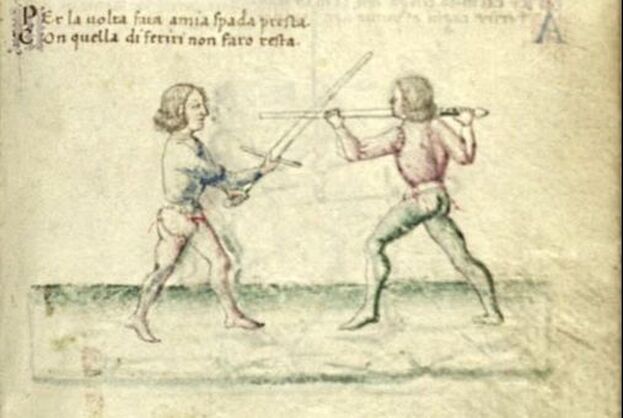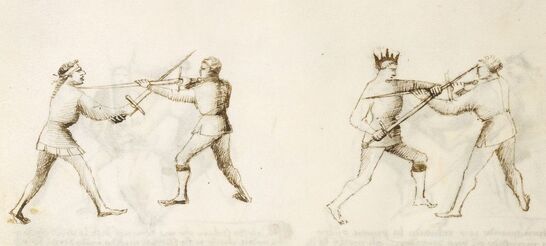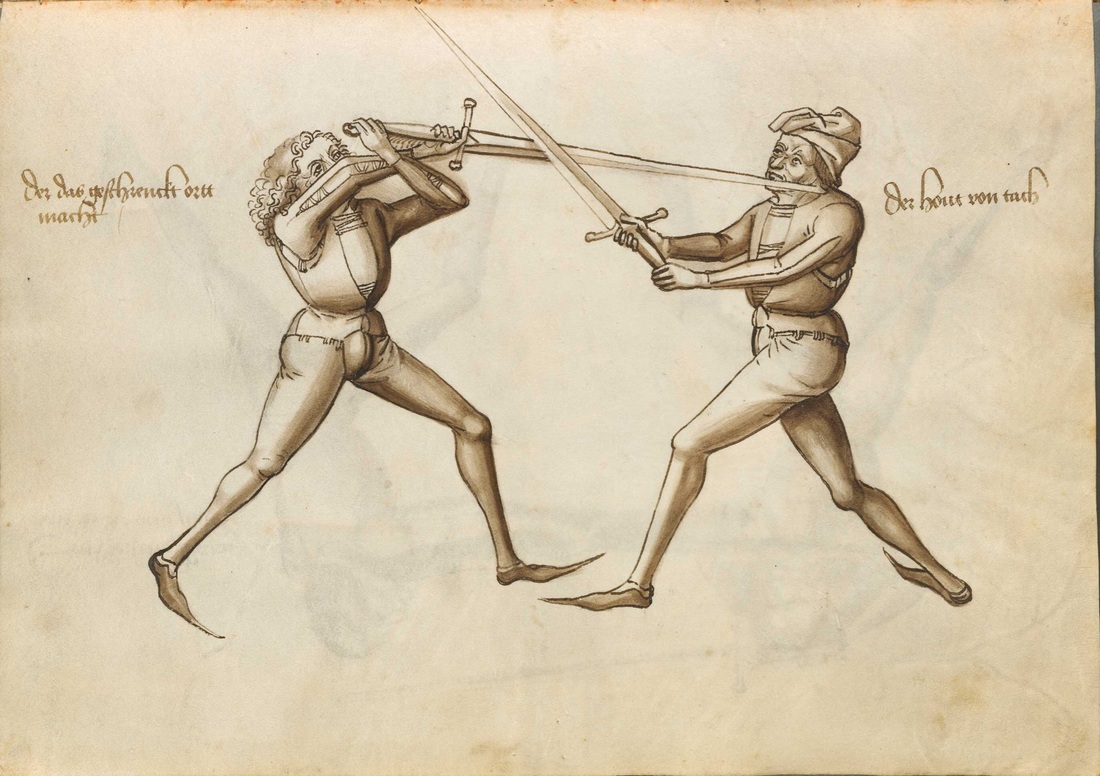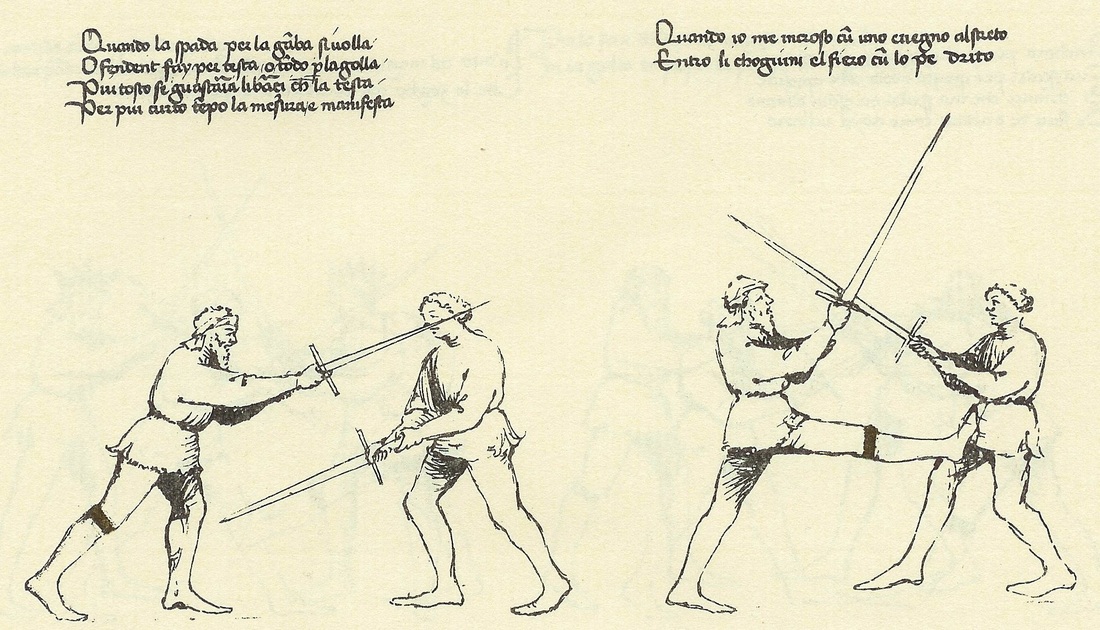THE LONGSWORD

A common knightly side-arm over a period from around 1350 to 1550, this type of sword has the following distinctive characteristics:
- A double edged blade usually measuring 90 to 110cm (35 to 43 inches) in length
- A fine, sharp point for thrusting
- A strong cross guard
- A two-handed grip of 25 to 35cm (10 to 15 inches) in length
- A weight of between 1.2 and 2.4kg (2.4 to 5lb)
However, there is enormous variability in surviving examples of the Longsword, largely based on regional styles, intended use and the natural personal preferences of their owners.
At the HSD we have a few key guidelines for choosing a sword, such as recommending a weight of no more than 3lbs and a minimum length of 100cm (40 inches), although students are ultimately encouraged to find the sword which feels right in their own particular hand and best fits their height, strength and stature.
Our key primary sources for the study of the Longsword are a select number of manuscripts written in Italian and German during the 15th century. They include:
MS Ludwig XV 13: Fior di Battaglia (The Flower of Battle) written by Fiore Furlan dei Liberi c.1409, but with cross-reference to three other surviving versions each containing variations in text, layout and content.
Cod.44.A.8 (commonly called the Codex Danzig) compiled anonymously in 1452 and often attributed to the German fight-master Peter von Danzig).
Codex Vitt.Em.1324: De Arte Gladiatoria Dimicandi (On the Art of Swordsmanship) written by Philipo Vadi of Pisa c.1487.




Find medieval combat sources and much more by visiting the excellent Wiktenauer HEMA resource portal